Art Deco Wall Masks, Plaques & Busts
During the 1920s – 1930s and right up to today, wall masks have been very fashionable and popular. Although production of ceramic masks are now no longer made they were being produced all over the world although most of the companies were in Europe.
The list of companies worldwide is extensive. Newport Potteries (Clarice Cliff), Crown Devon, Beswick, Royal Belvedere, Essex, Lenci, Goebel, Royal Dux, Goldscheider, Everlast, Myott, Corterndorf, Boch Freres, Bosse, Buckeburg, Grundner-Keramik, Goebel-Bieber, Keramos, Keramia, Ingels, Royal Doulton, Rosenthal, Douglas and Leonardi to name but a few.
They display singularly or in a group – on either side of a picture perhaps ore over a mantle piece.
Most masks were made of ceramic materials like porcelain and terracotta, although there were a few bronze and spelter masks designed by Josef Lorenzl and Stephane Dakon and these were also sometimes made as free standing busts. Some terracotta masks were produced as both masks and as busts typically by Goldscheider, Goebel and Karl Grossl for Keramia.
A selection of standing busts (below).
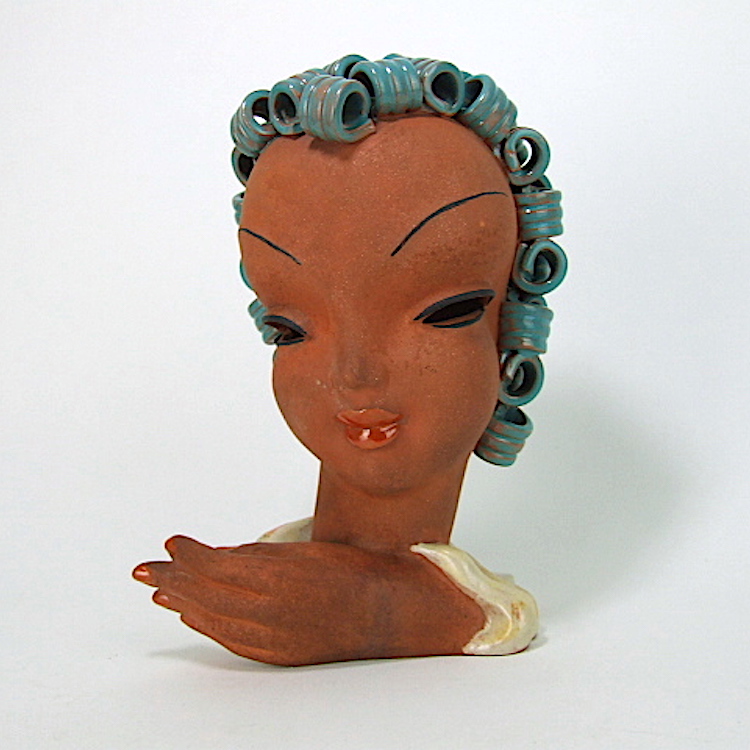

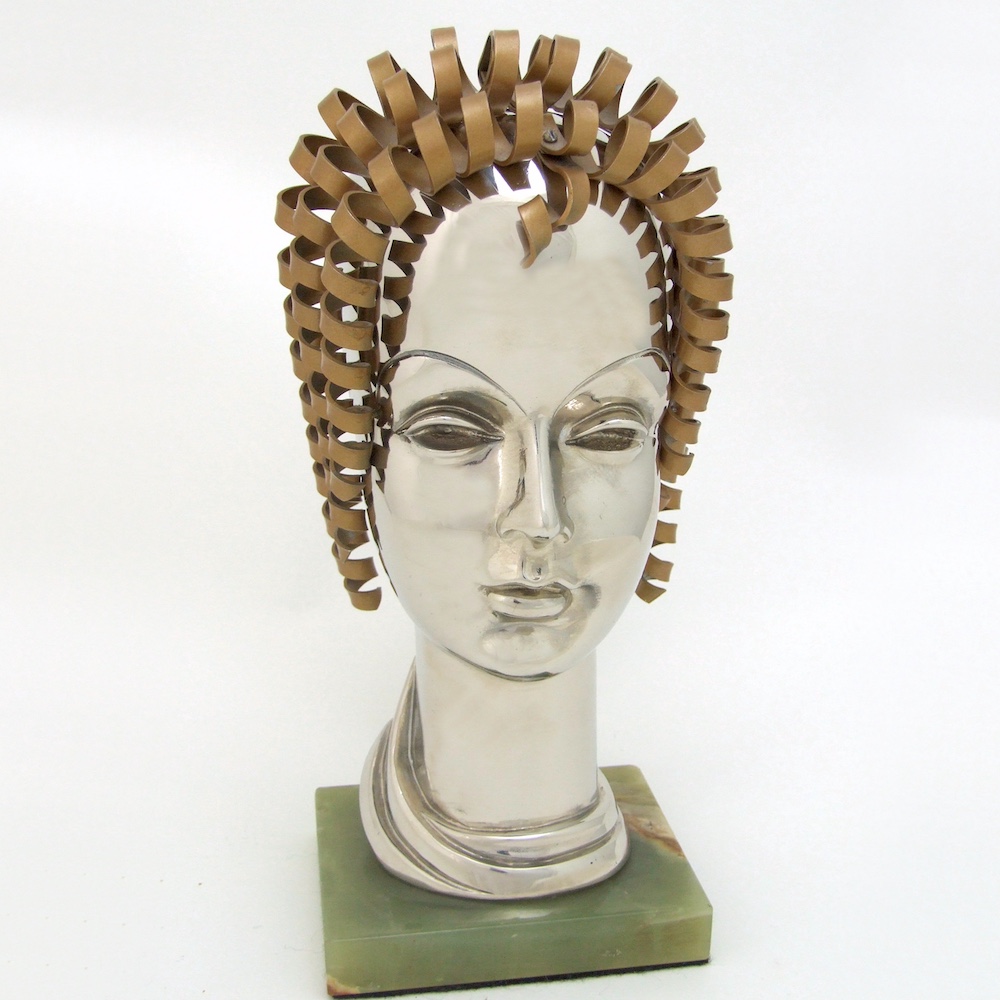
(Left) Karl Grossl for Keramia bust (centre) a Goldscheider bust and (right) bronze bust by Dakon all with sausage curls
Many top artists designed the masks often freelance. Artists such as Lorenzl, Dakon, Podany, Grossl, Goebel, Hubatsch and Knoerlein. Some artists worked with the larger companies like Goldscheider and then went on to form their own companies.
One of my favourite mask designers was Rudolf Podany (1876-1963). Born in Vienna, he produced some of the very best examples and most life-like of all the designers, as seen in the gallery below, all by Podany and all from my personal collection.
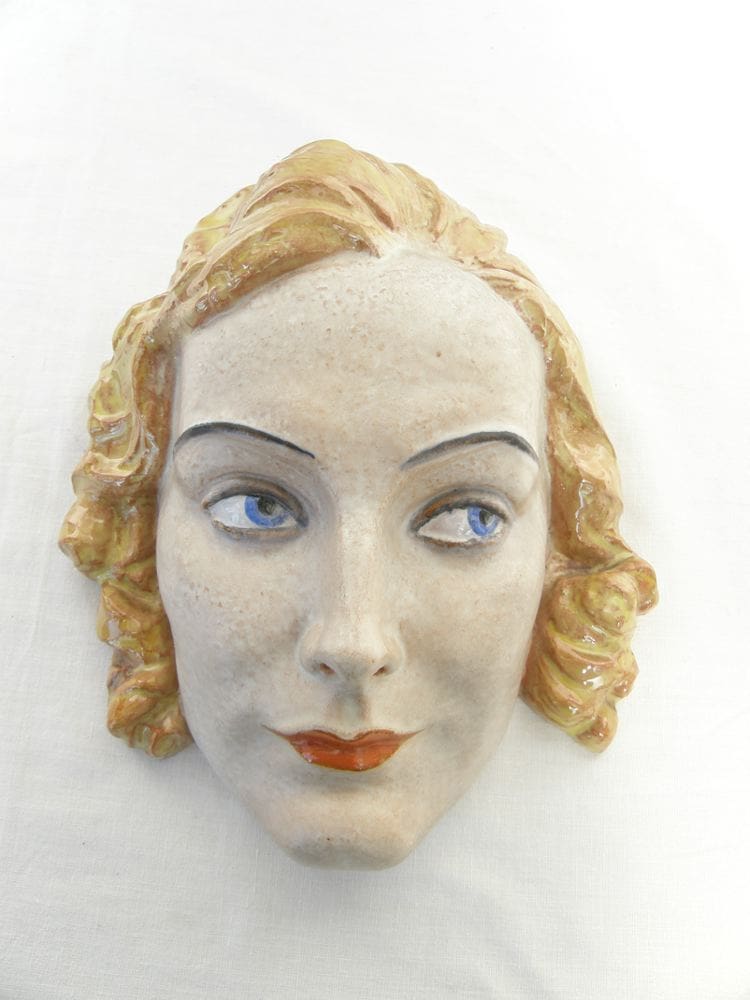
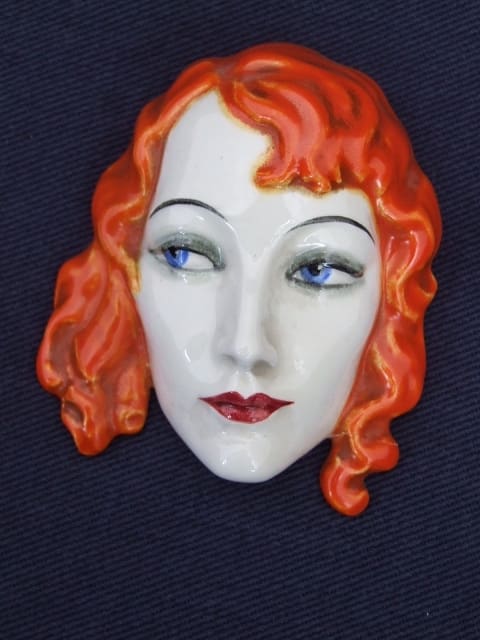
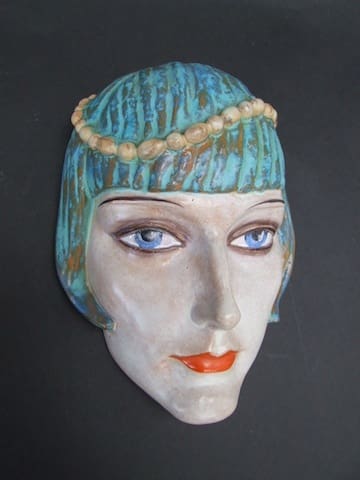
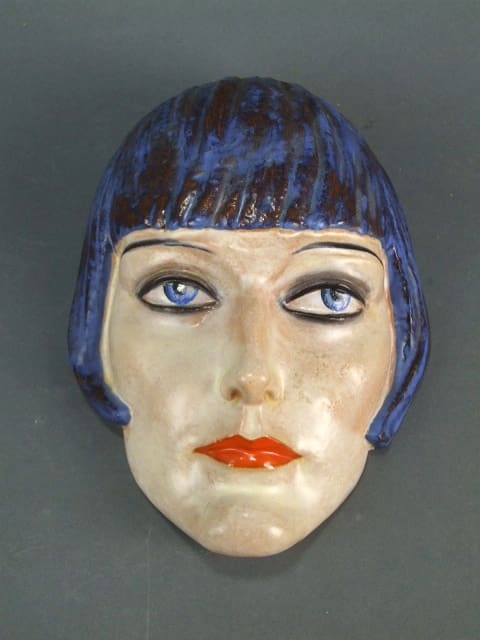
For the lower end of the market cheaper plaster masks were made. Generally plaster pieces are of reasonable but lesser quality, however the Leonardene company of London (Leonardi was the designer who owned the company) were of better quality along with the plaster Jon Douglas and Collins masks which were often modelled as movie stars and usually in larger sizes.
Italian wall masks primarily by Ginardi and Lenci are commanding increasily higher prices recently and have a huge following among mask collectors.
The Lenci factory was established in Turin, Italy by Helen Konig and her husband and in 1927 production of ceramics were introduced leading to the designs which were inspired by the art deco and Italian fashions of the 1930s which made Lenci a worldwide success.
The top quality masks were mainly made by Goldscheider, Lenci, Rosenthal, Ginardi and Podany (Keramos).
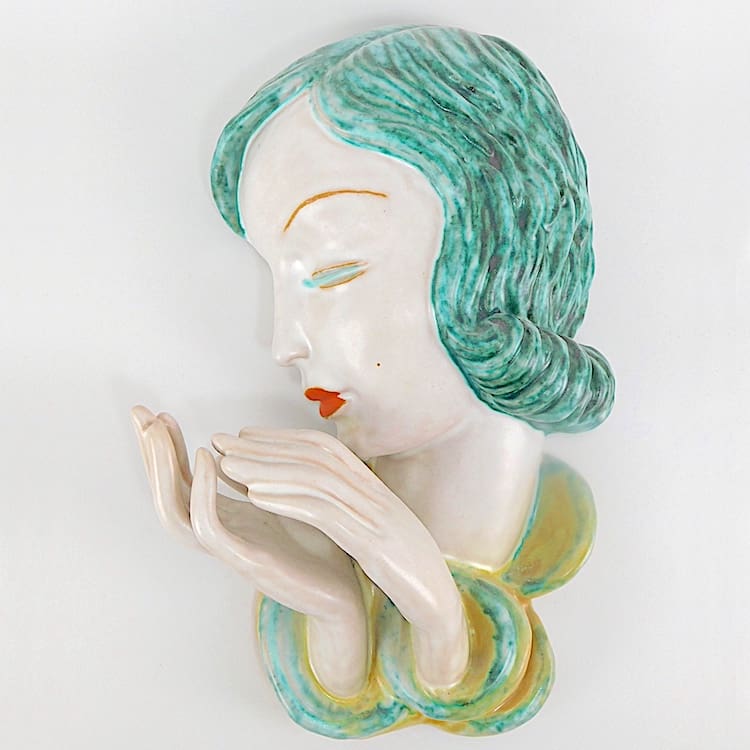

Goldscheider Masks
In 1938 the Goldscheider company was seized by the Nazis and the Goldscheider family fled Europe with some members of the family settling in the USA and some in Britain where they set up companies producing wall masks, sometimes in collaboration with existing factories.
The Goldscheider company was known for its hair made as sausage curls, created by rolling the clay and fixing it to the head. Some of the freelance artists took the sausage curls with them when left after working for Goldscheider and many of the Karl Grossl and Adolph Prischl masks have similar curls.
Goldscheider was one of the biggest producers of wall masks at this time. They were made in various sizes, sometimes the same mask being made in three different sizes. Two types of glazes were used – the matt glaze and the high gloss glaze. Often the same model could be ordered in either finish and various colour-ways. The most famous and most desirable Goldscheider mask of the art deco era is the iconic tragedy theatrical mask which I believe was made in three different sizes.
Goldscheider, W. Goebel and Keramos employed many freelance artists to make designs for them. Top freelance artist such as Josef Lorenzl, Stefan Dakon, Rudolf Knorlein, Willhelm Thomasch, Karl Sailer, and Adolf Prischl.
The Czechoslovakian company of Royal Dux made many ceramic wall masks, some modelled as famous people and Hollywood movie stars of the 1930s. Stars such as Bing Crosby, Rita Hayworth and Ginger Rogers were very popular. They also made series of female service women, Wrens and Wrafs.
Like most other ceramics companies at the time, Royal Dux also produced many ceramic figures including colourful dancers – male and female, animals, children and a favourite of mine, the Google Eyed Family.
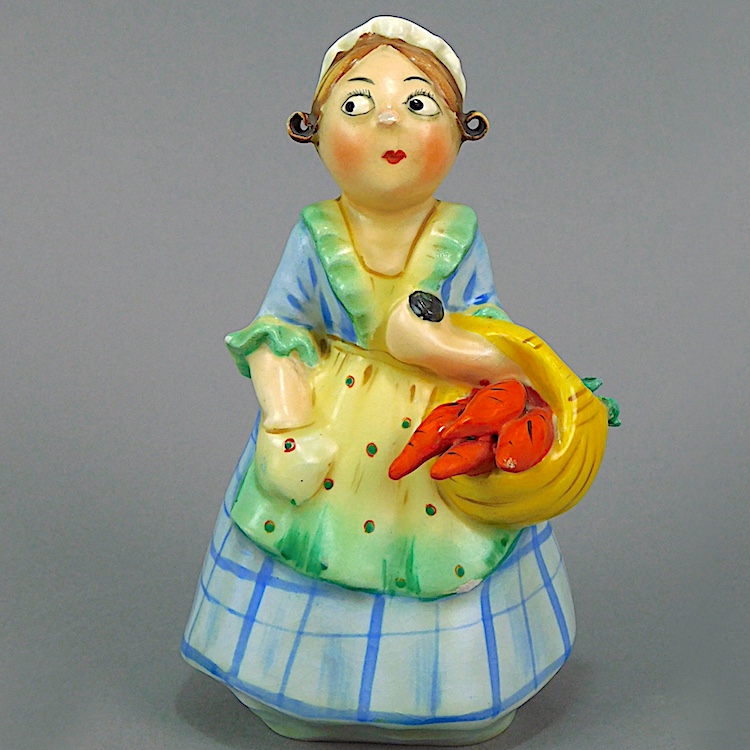
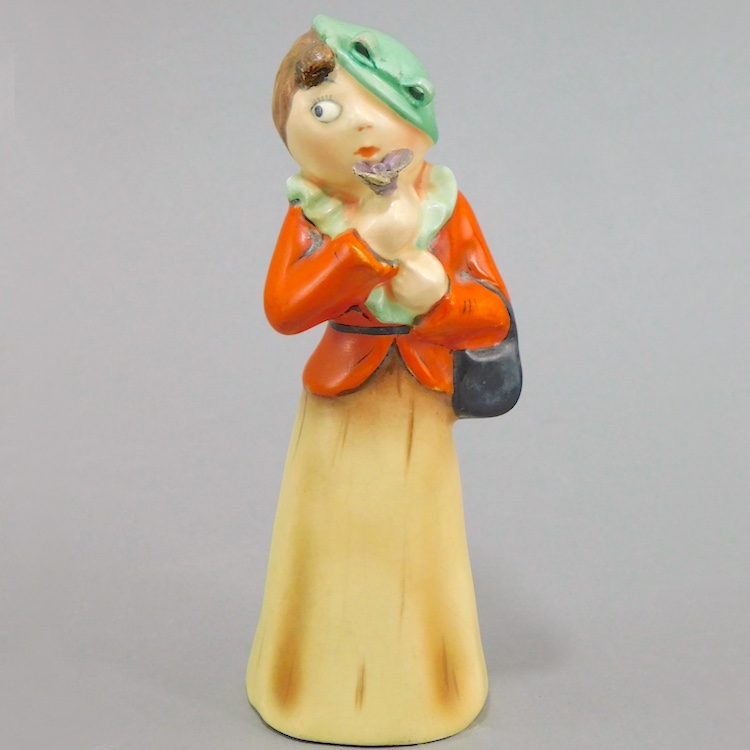

In the early 1980s modernist art deco style wall masks were produced by Lindsey B, some of which were used as models for displaying glasses in opticians which are recognisable by the ridge on the nose. Her company was only producing plaques and busts for three years but the style is ageless and now sought after and very collectible.
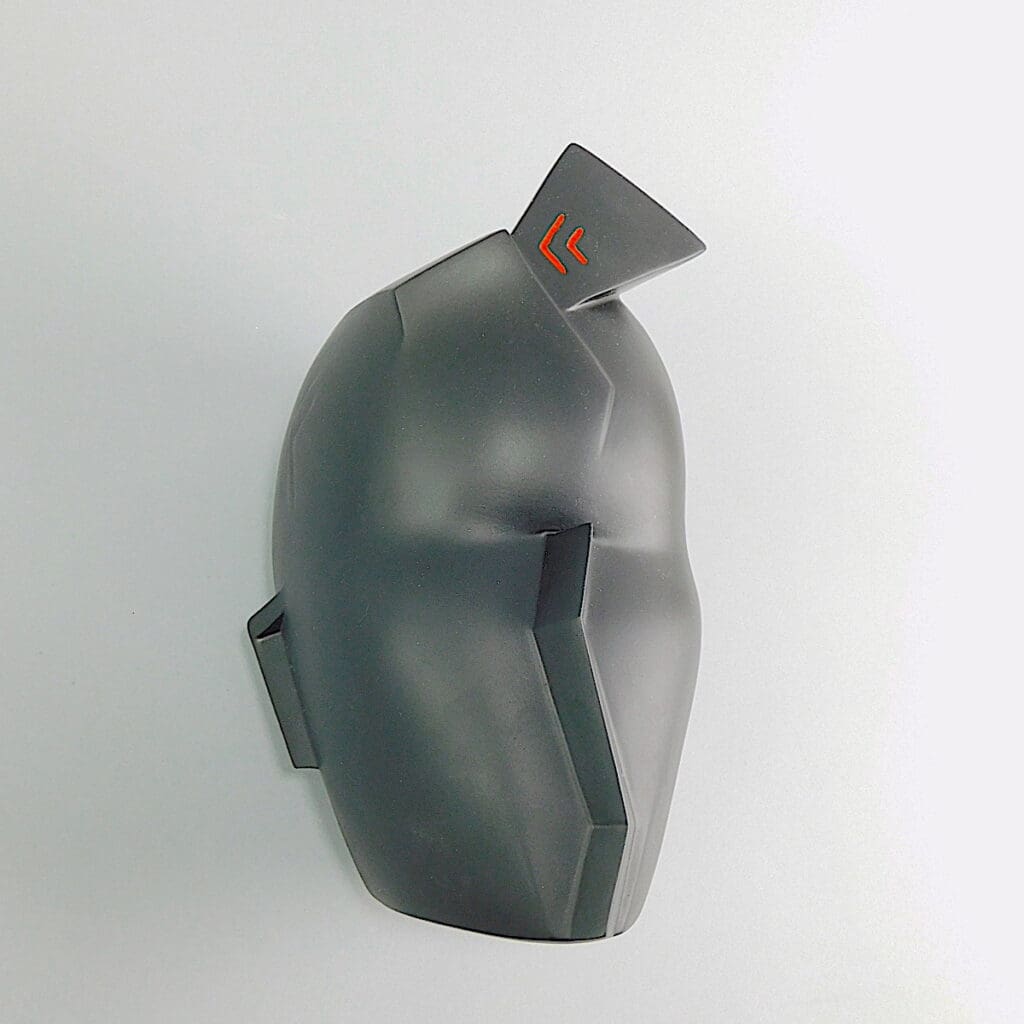
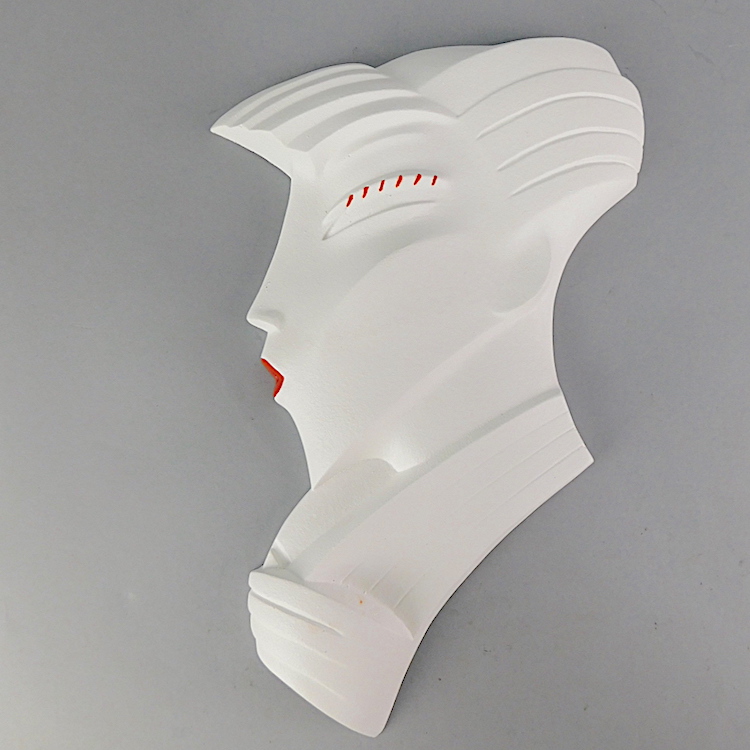
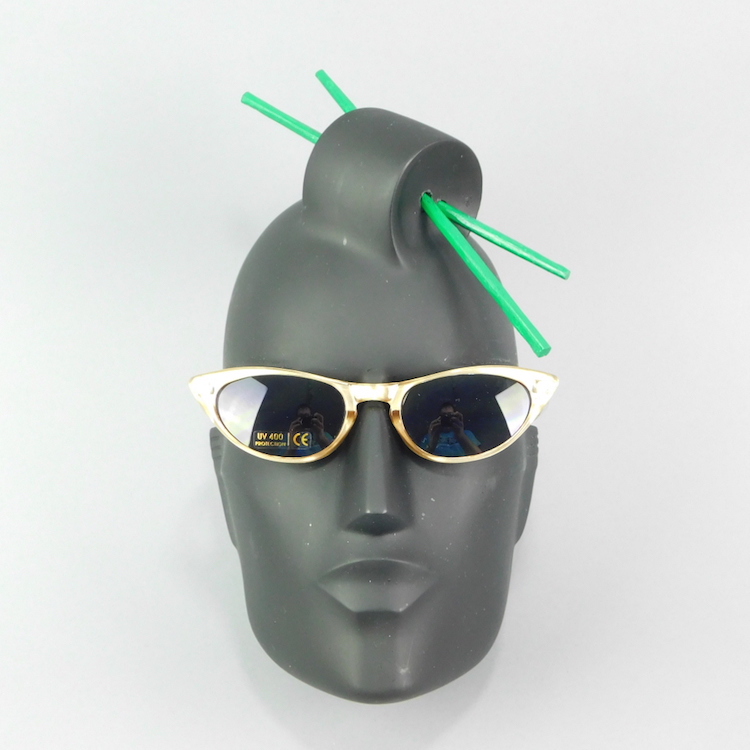
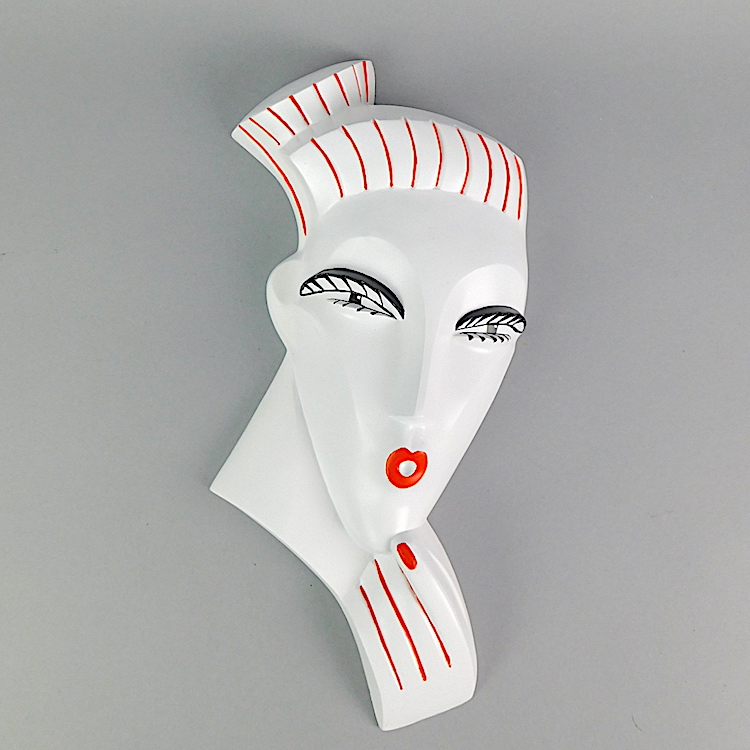
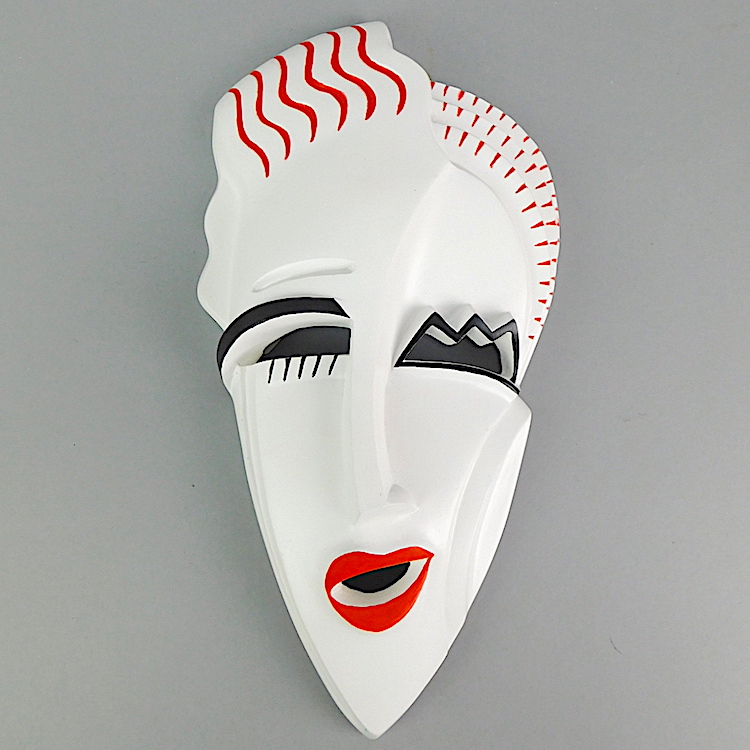
Lindsey B wall masks were made in neo plastic, plaster and Crystacal
Next Blog: Art Deco Posters
Back to all blogs